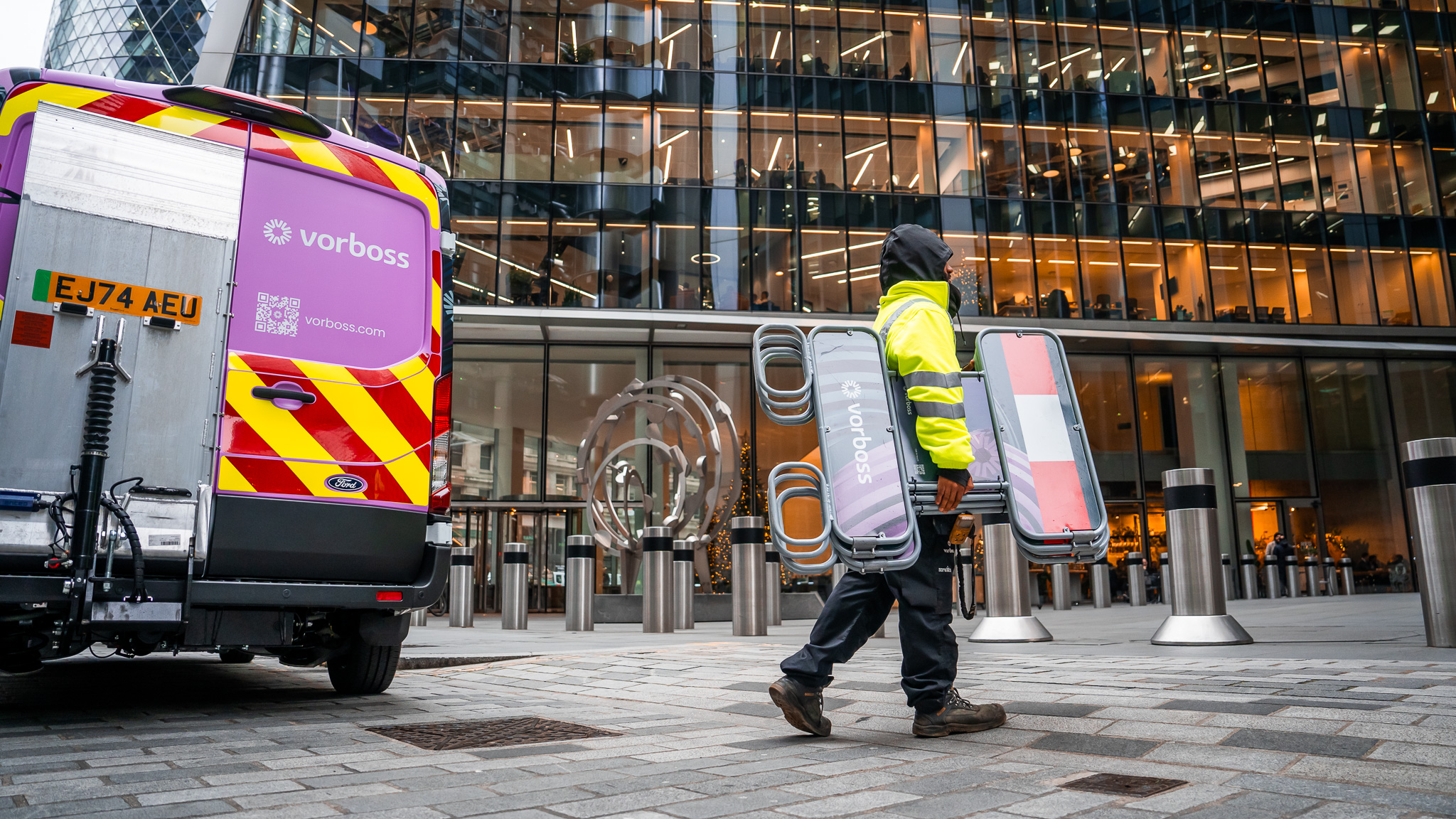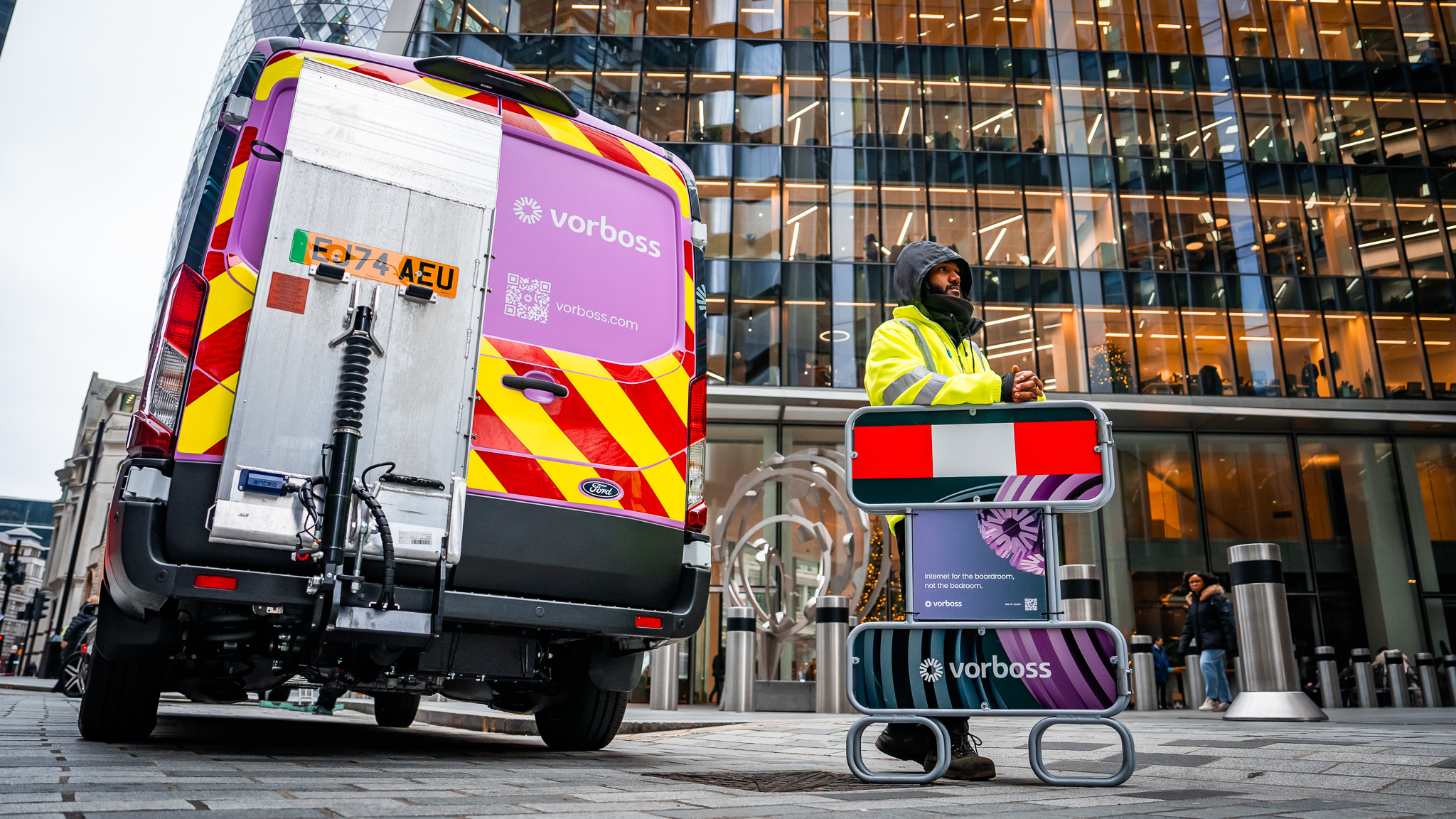
Highlights
John Browett is the new Vorboss Chair, succeeding Paul Latham. John brings nearly 40 years of experience in retail and investment, with a notable track record at Apple, Dixons, Dunelm, and tesco.com. With a career spanning executive and non-executive roles, John’s wealth of experience is set to enhance Vorboss' strategic development.
As London's leading enterprise fibre network, we are delighted to announce a significant leadership change. John Browett, a highly experienced business leader with a career spanning almost 40 years in the retail and investment industries, joins as the new Vorboss Chair. He brings a wealth of experience and strategic vision to help drive our ambitious goals.
A new chapter for Vorboss
We are dedicated to revolutionising London's business connectivity, and as our Chair, John Browett will contribute to this vision. This move coincides with Paul Latham's retirement from his role as Chief Executive at Fern Trading Group. Browett's appointment marks a pivotal moment in our journey, signalling an era of growth and innovation.
John Browett
John Browett has held influential positions in both the retail and investment industries. His extensive resume includes notable roles at Apple Retail, Dixons Retail PLC, Dunelm, and Tesco.com. His expertise in launching new ventures and scaling established businesses makes him a perfect fit for Vorboss.
In addition to his new role at Vorboss, Browett serves on the board of Octopus Group Holdings, the parent company of Octopus Investments, which advises Fern Trading Group. His familiarity with the company and its objectives will benefit Vorboss as we expand our enterprise fibre network.
Our unique infrastructure
We have created a unique and robust infrastructure asset in London. With over 500 kilometres of fibre optic cable installed, we aim to connect all commercial properties in Central London with a minimum of 10Gbps,scaling up to 100Gbps. This extensive network, wholly owned by us, was launched in September 2022 after three years of intensive development.
We designed our network to have the speed and reliability to meet the demands of businesses in the Capital, fostering growth and innovation. Our commitment to providing cutting-edge technology is evident in our workforce, which includes graduates from the Vorboss Academy—the first in-house training facility dedicated to equipping the next generation with the necessary skills to support the ageing telecommunications sector.
Leadership to drive growth
Tim Creswick, CEO of Vorboss, expressed his enthusiasm about Browett's appointment:
"John joining us as Chair couldn't come at a better time to drive forward our ambitions. I'm proud of our growing business and moving the market into a world where end-users no longer think about bandwidth. John's depth of expertise and counsel will be invaluable as we start to scale."
Browett himself is excited about the future:
"Vorboss has made great strides in upending the fibre industry, and I can't wait to work with them to realise their vision of powering the Capital's most ambitious businesses. There is no other company out there doing this, and what the team has already achieved is remarkable, so it's hugely exciting to work closely with them at this pivotal moment in their journey."
The combination of Browett's strategic vision and Vorboss' innovative infrastructure sets the stage for an exciting future in enterprise fibre. Stay tuned as we continue to transform the enterprise fibre landscape in London.
Tell us about yourself so we can serve you best.
Got a question?
More articles

For many landlords and building managers, the word “wayleave” feels like the responsible route whenever a fibre circuit is being installed on their property. It sounds formal and safe – a neat legal box to tick.
In many cases, however, a wayleave adds unnecessary complexity and delays, frustrates tenants, and can expose landlords to long-term legal risks.
At Vorboss, we’ve connected thousands of office spaces across London without a wayleave, keeping landlords in full control and getting tenants online faster.

What is a wayleave?
A wayleave is a written agreement between a landowner and a telecoms operator. It gives the operator permission to install and keep equipment on private property.
What many people don’t realise is that signing a wayleave also activates “Code rights” under the Electronic Communications Code. These rights go beyond simple permission, they give the operator legal powers to stay on the property indefinitely, access it when needed, and even refuse removal of their equipment in certain situations.
For a typical connection into a commercial building in London, a wayleave can make the fibre installation process slower, more expensive, and limit the landlord’s flexibility long term.
Why a wayleave isn’t required for standard in-building fibre connections
For a standard in-building fibre connection serving a tenant, a wayleave isn’t a legal requirement. Important protections, like building access, fire safety, repairing any damage, and removing equipment, are already covered by the tenant’s lease and usual building rules.
If no wayleave is signed, no Code rights are triggered, meaning the landlord retains full control and the installation exists under a simple, fully revocable licence.
In practice, this gives landlords far more protection and flexibility:
- No legal lock-in – the telecoms operator has no long-term rights to stay or refuse removal.
- Landlords keep full control – equipment can be moved or removed when the building changes.
- Faster fibre installation – no time lost in drafting contracts or solicitor reviews.
- Happier tenants – connections go live quicker; tenants get to move in faster.
By contrast, signing a wayleave and granting Code rights introduces a complex and expensive legal process for any fibre removal or relocation. This can take at least 18 months, plus potential court or tribunal proceedings, making it slower, and far less flexible for the landlord.

Public services across central London are evolving, and the City of London Corporation is leading the way.
Whether you work, live or study in the Square Mile, you’ll soon feel the difference that faster, more dependable connectivity brings.

What is the Future Network Programme?
The City of London Corporation is rolling out the Future Network Programme, a major project to modernise its entire digital infrastructure and bring everything under one unified network.
From offices and schools to iconic green spaces like Hampstead Heath, cultural destinations like the Barbican, and historic markets such as Leadenhall and Old Spitalfields, this upgrade will mean more reliable connectivity across the City’s buildings and public spaces.
It also extends to essential services, including critical sites run by the City of London Police. This enhanced connectivity will support everything from secure communication systems to faster, more resilient networks for emergency operations.
Leading this transformation is Roc Technologies, supported by Juniper Networks and Palo Alto Networks; all powered by the Vorboss fibre network. Together, we’re bringing the City onto a modern digital foundation that’s ready to support its future.
Who the Future Network Programme benefits and how?
The programme is designed for everyone who depends on public services in the Square Mile:
- Students in City-run schools will have fast, reliable connectivity to fully access digital learning tools.
- Public-sector teams will experience smoother hybrid working, better access to online platforms, and more efficient collaboration across locations.
- Residents and visitors will see improvements in public Wi-Fi, digital services, and online access in libraries, community hubs, and other shared spaces.
- The City of London Police will gain a more secure, faster and resilient network that enhances CCTV reliability and enables more effective frontline operations.

.avif)

.avif)

